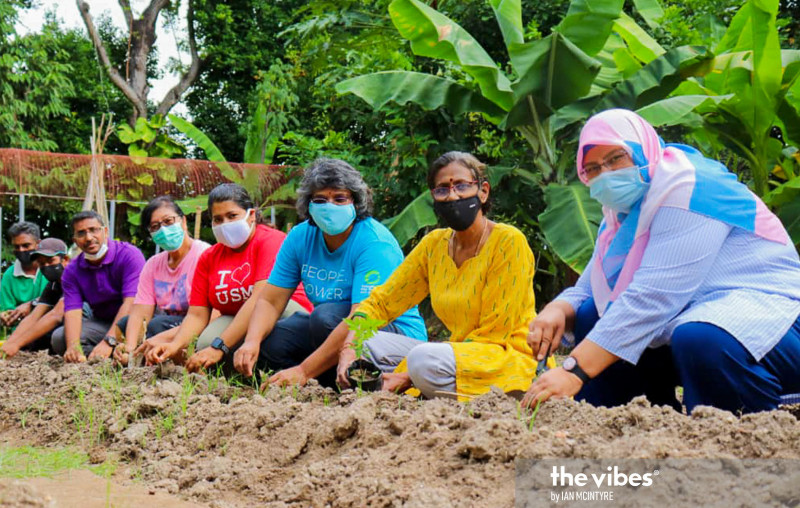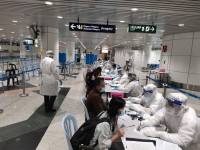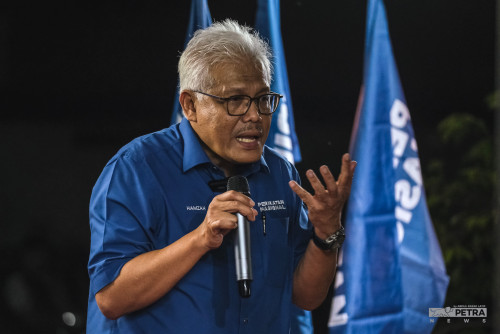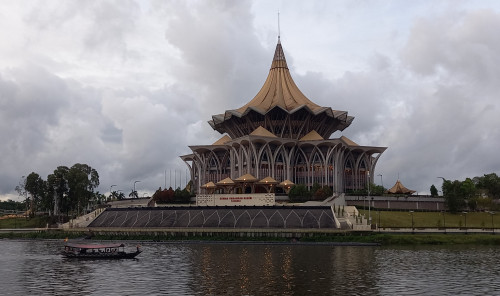

THE Covid-19 pandemic has persisted for 18 months and nobody can predict when it will end. Many have become unemployed or underemployed resulting in losses of income, causing great hardship to unknown thousands of people.
Desperation has led many to put aside their pride and seek help from any available source. The white flag movement is an expression of their desperation.
The community has generously come out to help, but such charity cannot be a long-term solution. There is no certainty that the unemployed can all go back to their pre-Covid-19 vocations.
The country has been ravaged and the post-Covid-19 topography of the economy will be changed. It certainly will not go back to what it was; a new norm is inevitable. We need to not only provide immediate relief to those who have lost their income, but also offer alternatives on a more permanent basis for those who will not be able to go back to their pre-Covid-19 vocations. We need a scheme to move as many people as possible from charity to self-sufficiency.
Prioritising agrofood
In 2019, the share of agriculture in Malaysia’s gross domestic product was only around 7.28%, the industrial sector contributed approximately 37.42%, and the services sector contributed about 54.17%. The share of agriculture has declined over the years.
Just over a quarter (26.6%) of Malaysia’s land area of 329,847 sq/km is used for agriculture – the bulk of it for palm oil (75%) and rubber (15%). A very small area of land, just over 5900 sq/km (8%) is used for vegetables, fruit, and livestock farming. Not surprisingly, Malaysia has a rapidly deteriorating negative balance of trade in food products; in 2018, the deficit was RM18.8 billion, compared with RM16.55 billion two years earlier. This trend has to be negated; a greater amount of home produce will help increase the nation’s food security and hold down food prices.
Despite popular belief in the contrary, there is abundant land available for agriculture not to be made by cutting down more forests. Three sources of such land are abandoned agricultural land, vacant urban land, and land under electrical cables.
Abandoned agricultural land
It was estimated in 2014 that Peninsular Malaysia alone had an estimated 119, 273ha of agricultural land previously cultivated, now abandoned for a variety of reasons.
The Agriculture Department’s efforts to have these lands cultivated have had limited success because these lands have multiple or untraceable owners or are too small for large-scale farming. Hence, only 7,945ha of the 119, 273ha were developed between 2014 and 2018.
There is still much abandoned land available that the government needs to mobilise for use by those who wish to farm.
Vacant urban land
There is no precise definition of the term vacant urban land because it includes many different types of unutilised or underutilised parcels – perimeter uncultivated land, derelict land, land with abandoned buildings and structures, and brownfields, i.e. previously developed land not currently in use. Definitional issues and difficulty of knowing the actual use-status of such land make it difficult for even government officials to accurately measure the amount of vacant land. Urban planners typically estimate that at least 10% of the total land area of capital cities and 10-15% in other urban centres is vacant. By this estimate, Kuala Lumpur would have close to 26 sq/km of vacant land, and the other urban centres would cumulatively have many times more vacant land. At least some of these vacant lands are suitable for cultivation and animal husbandry.
Much of these vacant lands are government-owned and it is possible to grant these lands by way of temporary occupation licences (TOL) or leases for cultivation or animal husbandry.
Electricity transmission corridors
The supply of electricity requires the construction of electricity transmission lines. The strips of land below and adjacent to high voltage electricity supply lines, referred to as transmission corridors, vary in width depending on the kilovolts to be transmitted and existing land use of the locality in which the transmission line is to be constructed. In forest areas, the width is required to be 30m to 35m, but only 20m to 25m in locations other than in forest areas.
Even just using a multiplier of a 25m width, the total land area for transmission corridors in Peninsular Malaysia’s 24,607km-long transmission lines would be 615.18 sq/km, i.e. more than 237.5 square miles. This is a huge amount of land and a significant portion of it can be used for appropriate agriculture.
TNB initially obtained government or privately owned land by a variety of means – alienation, direct purchase, TOL, or leases as provided for in the National Land Code, but has since 2010 opted to acquire them via the Land Acquisition Act 1960. In land leases, landowners retain their right to cultivate the land, but not so in land that has been acquired. TNB is free to rent out its acquired land to whom it chooses for agriculture or any other use compatible with its use as a transmission corridor.
TNB is not averse to the idea of cultivating crops inside transmission corridors so as to “greenify” the vacant area underneath transmission lines and at the same time reduce undergrowth maintenance and encroachment into the area.
Government support
The Malaysian constitution specifies that land is a state matter. In Peninsular Malaysia, land is regulated in all states by the respective state authorities, but in accordance with the National Land Code. Sabah and Sarawak have their own land laws – the Sabah Land Ordinance (Cap 68) and the Sarawak Land Code (Cap 81). It is for the state governments to facilitate the marshalling of vacant lands for use by those who can make a living out of it.
State governments need to establish dedicated units that can surmount the bureaucratic maze to rapidly identify available plots of land and make these available to applicants as soon as possible. There has to be sufficient publicity of efforts and individuals keen to participate in the project should be encouraged to identify suitable land themselves.
The state governments need to work closely with the Agriculture Department, which already has ongoing projects to support urban farming. The department’s Community Gardening and City Gardening projects need to be urgently enhanced.
The Community Gardening (Pertanian Komuniti) project, conducted with the consent of local authorities, involves letting each participant use three to five beds/rows to plant vegetables, corn, and fruits such as papaya and banana. This scheme needs to be further developed into community farms that permit groups of farmers to cultivate adjoining plots that as a collective can employ economies of scale.
The City Gardening (Pertanian Bandar) project is for individuals who can identify land in urban areas themselves. The department offers start-up support, including seeds, fertiliser, and other forms of input. Such efforts could initially involve growing vegetables using a hydroponic system, which may yield a harvest in less than five weeks. Additionally, new farmers could grow other vegetables that should give yields within three months or plants such as corn, papaya, etc., with yields between three to five months. They may be able to supplement this with free-range poultry rearing, which can yield eggs in four months with the yield increased three to fourfold in a year.
Urban authorities in many countries maintain urban farm centres to train communities of urban farmers to improve urban farm efficiency and knowledge, and promote better job opportunities. This is worth emulating in our current situation.
Conclusion
Encouraging new entrants to farming will have the collateral benefit of optimising national resources for current and future food production. Increasing home produce will help mitigate Malaysia’s increasing negative balance of trade in food, increase the nation’s food security, and help hold down food prices.
The principal objective of the proposed farming effort must be to make available land for agriculture to help the impoverished become self-sufficient. It is important that the effort is not weaponised by politicians and the influential to grab even more land for themselves. – The Vibes, July 19, 2021
Datuk Sothi Rachagan is an emeritus professor. He is also a former dean of the faculty of law at Universiti Malaya, vice-chancellor of Perdana University and Nilai University, and International Association of Consumer Law president. He serves on numerous international consumer protection bodies.
This article is jointly written with Emeritus Professor Tengku Datuk Shamsul Bahrin with data support from agronomist Dr Palasuberniam Kaliannan










_and_lord_mayor_rajendran_posing_in_a_mock_up_lrt-Ian_pic.jpeg)










